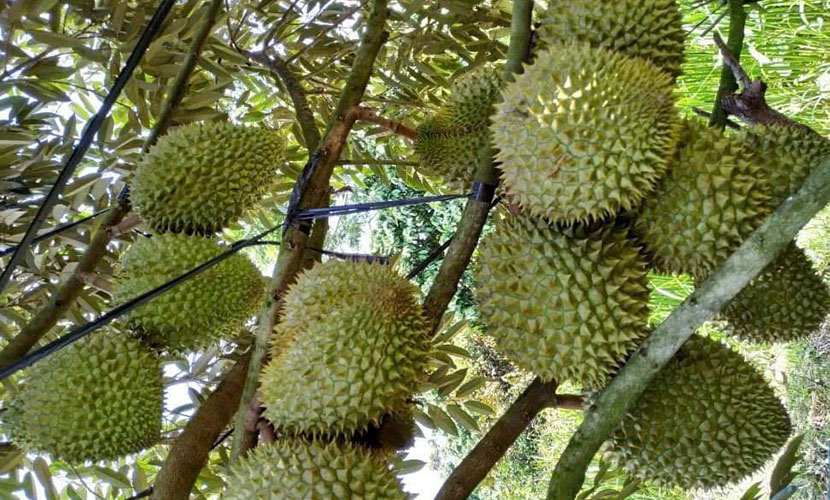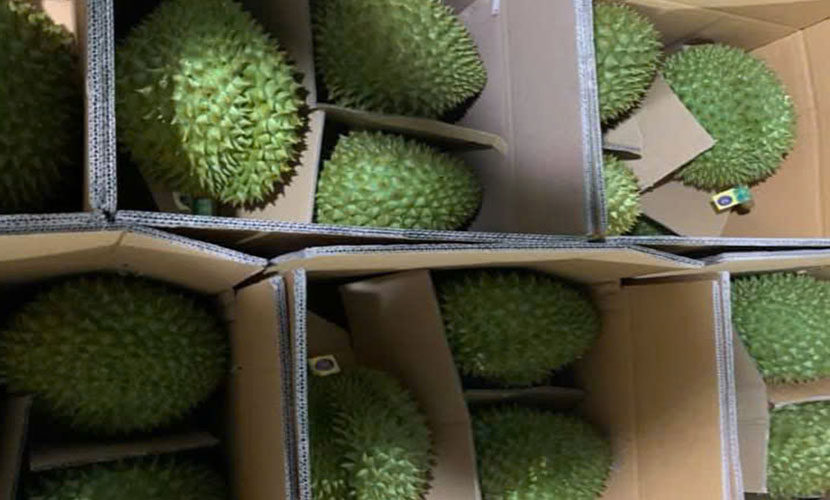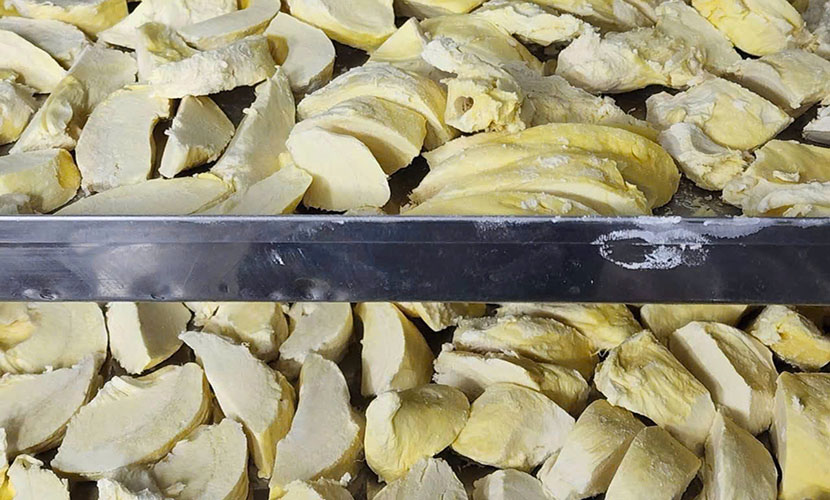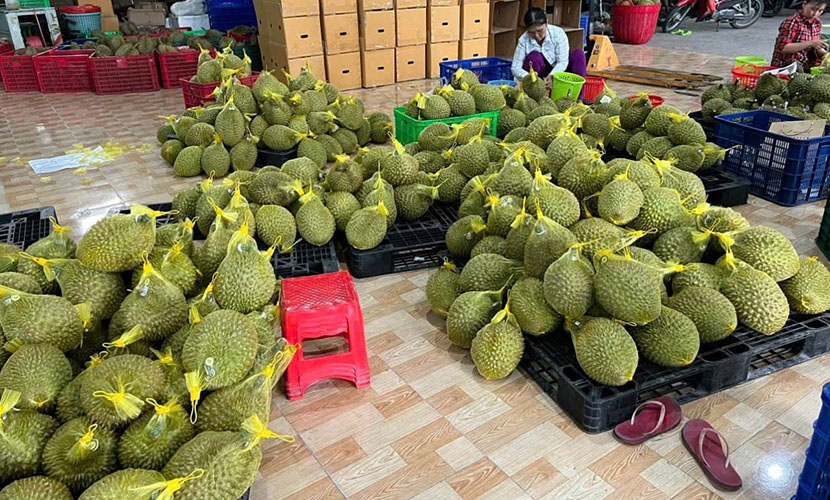
China has been increasingly requiring the strict import requirements for Vietnamese durian. Therefore, Vietnam’s durian industry has been intensifying quality control, traceability, and investment in deep processing. This strategic move aims to build a strong agricultural brand capable of competing in the global value chain.
Durian is one of Vietnam’s key agricultural export products, especially to the Chinese market. However, since early 2025, this sector has continuously faced technical barriers, causing a noticeable slowdown in exports. The main reason stems from China tightening quality controls on imported agricultural products, particularly high-risk items such as fresh durian.

Vietnamese durian
According to the Ministry of Agriculture and Environment, many shipments of Vietnamese durian have undergone rigorous inspections. These issues have caused congestion at border gates and seriously affected customs clearance speed.
China has controlled food safety indicators strictly, with special attention paid to pesticide residues. They also controlled heavy metals such as cadmium and the use of banned chemicals like auramine O.
The technical control has created difficulties for businesses during export. Also, it directly impacted farmers due to disrupted sales channels. In many cases, the shipments should be turned back or sold domestically at low prices. As a result, they will cause economic and psychological damage to producers.
Mr. Khanh, from the Ministry of Agriculture and Environment, stated: “Vietnam’s durian exports have faced difficulties since the beginning of the year. Several importing markets tightened food safety controls, especially on pesticide residues, heavy metals, and banned chemicals. However, in recent months, with close coordination from farmers, the durian sector is gradually recovering and regaining export momentum.”

Fresh durian from Vietnam
In response, the Ministry of Agriculture and Environment has proactively taken steps to open the market and strengthen partners’ trust. A key move is the official invitation to a delegation of experts from China to conduct field inspections of Vietnam’s durian production and export chain. The delegation will carry out the assessment from July 12 to 17, 2025.
Welcoming the Chinese delegation to inspect on-site is an important opportunity to demonstrate the capability of quality control in the durian export chain. It also clearly shows Vietnam’s commitment to strictly comply with international food safety standards.
In parallel, the Ministry has implemented technical measures to improve the quality across the entire durian value chain. By June 2025, Vietnam had issued 1,396 planting area codes and 188 packing facilities codes eligible for export to China. All data have been digitized and integrated into the national traceability system, enhancing transparency and management efficiency.
To enhance field monitoring capacity, the Ministry has finalized a draft Circular guiding the issuance and management of planting area codes and packing facilities. The new guidelines include stricter and more practical standards. The draft is currently under wide consultation with agencies, departments, and localities.

Frozen durian from Vietnam
This is to ensure its suitability with actual production conditions and importers’ requirements. Simultaneously, a quality control process for durian packing facilities serving exports is being developed and expected to be issued soon.
Applying a unified quality control process will help reduce post-harvest errors. In addition, it ensures consistent quality and meets the stringent requirements of major markets. At the testing level, the Ministry has requested testing labs to increase capacity and improve analysis quality. Especially, they should pay attention to food safety indicators such as cadmium and auramine O.
Currently, 24 cadmium testing labs and 14 auramine O testing labs have been approved by China. This helps shorten domestic testing times and reduce technical procedure pressure at border gates. As a result, positive signals are emerging with a clear recovery in export volumes.

Vietnamese durian factory
In the first six months of 2025, Vietnam exported 5,217 shipments of fresh durian. Accordingly, the total volume reached nearly 130,000 tons. Notably, frozen durian exports recorded a breakthrough with 388 shipments totaling 14,282 tons. They showed an increase of 300% compared to the same period last year.
The strong growth of frozen durian is a direct result of the export protocol between Vietnam and China in August 2024. Additionally, significant investments by many businesses in deep processing and expanding cold storage systems have played a crucial role in enhancing preservation capacity. These efforts also help meet strict technical requirements from buyers.
The Ministry of Agriculture and Environment predicts that fresh durian exports could recover positively from the third quarter of 2025. This recovery is especially strong during the main harvest season from August to October.
However, the recovery level will largely depend on whether businesses and farmers maintain food safety conditions as committed. If violations persist, market disruptions remain a significant risk for the entire sector.
Vietnamese source: https://thuonghieusanpham.vn/chuan-hoa-chat-luong-nang-tam-sau-rieng-viet-80931.html
